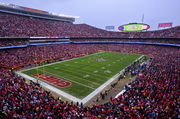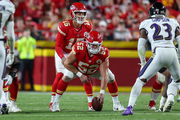
Imago
Credits – Instagram / @EdmontonOilers

Imago
Credits – Instagram / @EdmontonOilers
Right now, the NHL is dealing with a pretty big viewership issue in the U.S. Regular-season broadcasts have dropped by about 12%, and early playoff ratings have taken a hit of nearly 27%. They’re averaging around 718,000 viewers per game during the first three days of the 2025 postseason. So, this drop is really due to a mix of things: we’re missing out on those big-market U.S. teams like Boston, Chicago, and New York, and at the same time, there’s a record number of Canadian teams that are making U.S. fans less engaged.
Watch What’s Trending Now!
Criticism is really piling up regarding blackout policies, the scattered broadcast platforms, and the not-so-great production quality. This is frustrating fans and driving them away, particularly younger viewers who are used to having content on demand. On the flip side, Canadian viewership is still going strong, highlighting that this issue is more about the region than hockey itself. So, there’s this new report that’s got people talking about the league’s viewership, and it’s raising some eyebrows, particularly in the U.S.
On X, Braylon Breeze shared a report, stating, “US RATINGS: Game 6 of the Stanley Cup Final averaged 2.8M viewers — down 33% from last year (4.2M) and the least-watched Game 6 since 1994. It was the first Game 6 on cable since 1999 (DAL–BUF: 4.45M). The full series averaged 2.5M viewers — down from TNT’s 2023 final (2.6M).” This is definitely something to think about.
ADVERTISEMENT
🇺🇸 RATINGS: Game 6 of the Stanley Cup Final averaged 2.8M viewers — down 33% from last year (4.2M) and the least-watched Game 6 since 1994.
It was the first Game 6 on cable since 1999 (DAL–BUF: 4.45M).
The full series averaged 2.5M viewers — down from TNT’s 2023 final (2.6M).
— Braylon Breeze (@Braylon_Breeze) June 18, 2025
This drop happened right when they decided to show Game 6 only on cable networks and Max. It seems like this change really cut down on visibility and reach, especially when you think about how ABC broadcasts worked in even-numbered years. “The NHL’s decision to have every other Cup Final exclusively on cable (and Max) is just outright sabotage of any shot at getting visibility. It makes having the series on ABC in even years feel pointless by comparison. 2027 will likely be even worse—barring a miracle matchup,” Breeze further reported.
Leaning heavily into cable and streaming really makes it tough for casual fans to get in on the action. It changes how people watch games and brings up some big questions about whether the league understands how its media choices impact its popularity across the country. If the NHL doesn’t change its approach to broadcasting and make games more accessible—like by increasing free-to-air options or streamlining its streaming services—we might see even less engagement during the 2027 final, even if there are some big-name teams playing. But you know, these viewership issues have been pretty common this year.
ADVERTISEMENT
The NHL just can’t catch a break with these concerning numbers
The 2025 Stanley Cup Playoffs started with a lot of excitement, but it seems U.S. audiences lost interest pretty quickly. ESPN’s early-round coverage took a hit, with viewership dropping about 28%, averaging around 886,000 viewers for each broadcast. TNT wasn’t far behind, experiencing a 19% decline and pulling in about 882,000 viewers per game.
ADVERTISEMENT
Fans were getting more and more frustrated, not just because the numbers were dropping, but also because they were hearing a lot of negative feedback about the production choices—like TNT broadcasting games from Atlanta instead of on-site. Some people say that this took away the excitement of live arenas and made the viewing experience less enjoyable, which led to even more people tuning out. With the way cable and streaming are all over the place and viewership dropping, it’s clear that the NHL really needs to take a step back and rethink how it handles media.
Focusing on making things more accessible and ensuring consistent broadcasts could really help bring fans back into the fold. If things keep going like this, it’s not going to be good for the sport.
Top Stories
Chiefs Announce Relocation From Missouri to Kansas to Build New Stadium

Is Philip Rivers Catholic or Mormon? Religion, Ethnicity & More About Colts QB

Kansas City Mayor Sends Strong Message to Clark Hunt After Chiefs Confirm Arrowhead Exit

LIV Golf Issues Statement as Pro Announces Shock Retirement After Getting Relegated

DK Metcalf Awaits Huge Punishment From NFL After Controversial Incident vs Detroit Lions

Another Almost Fatal Disaster Surfaces From Statesville Airport Amidst Ongoing Greg Biffle’s Crash Investigation

ADVERTISEMENT
ADVERTISEMENT
ADVERTISEMENT

